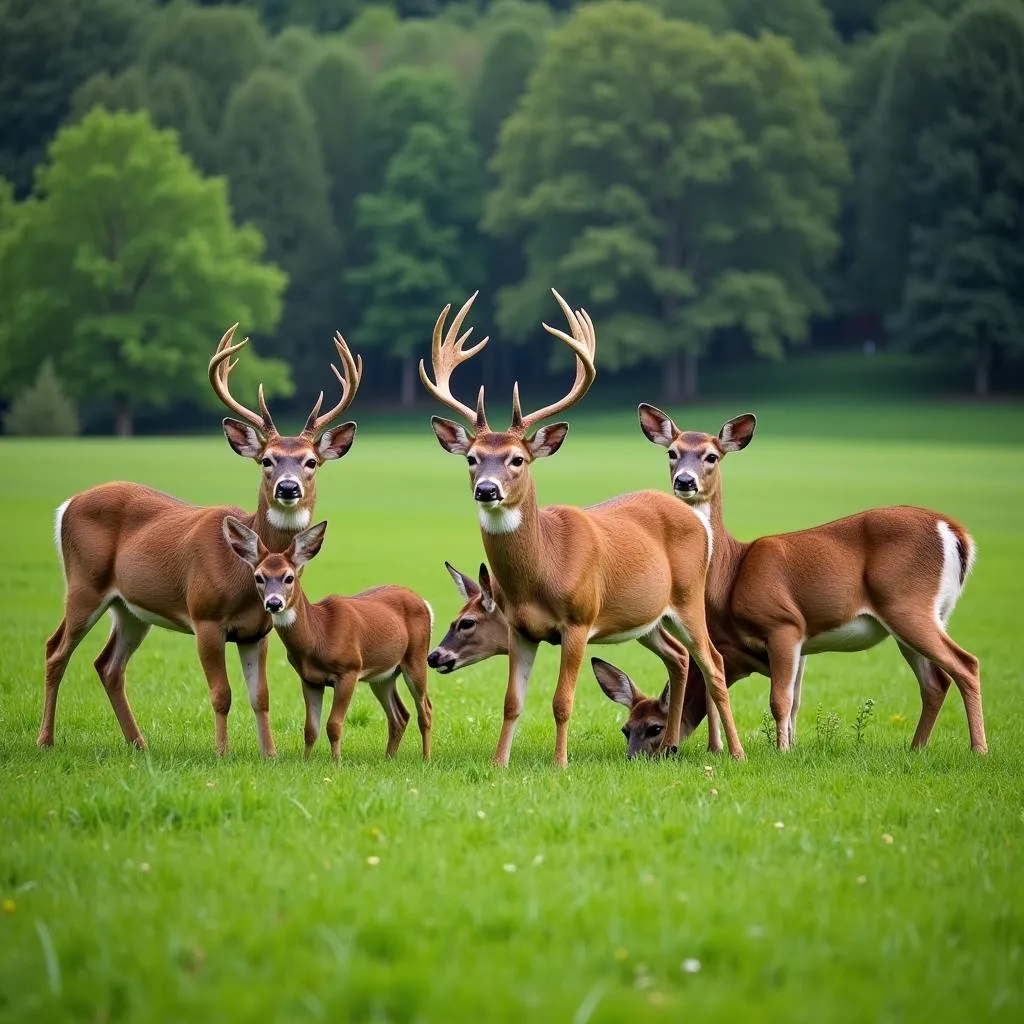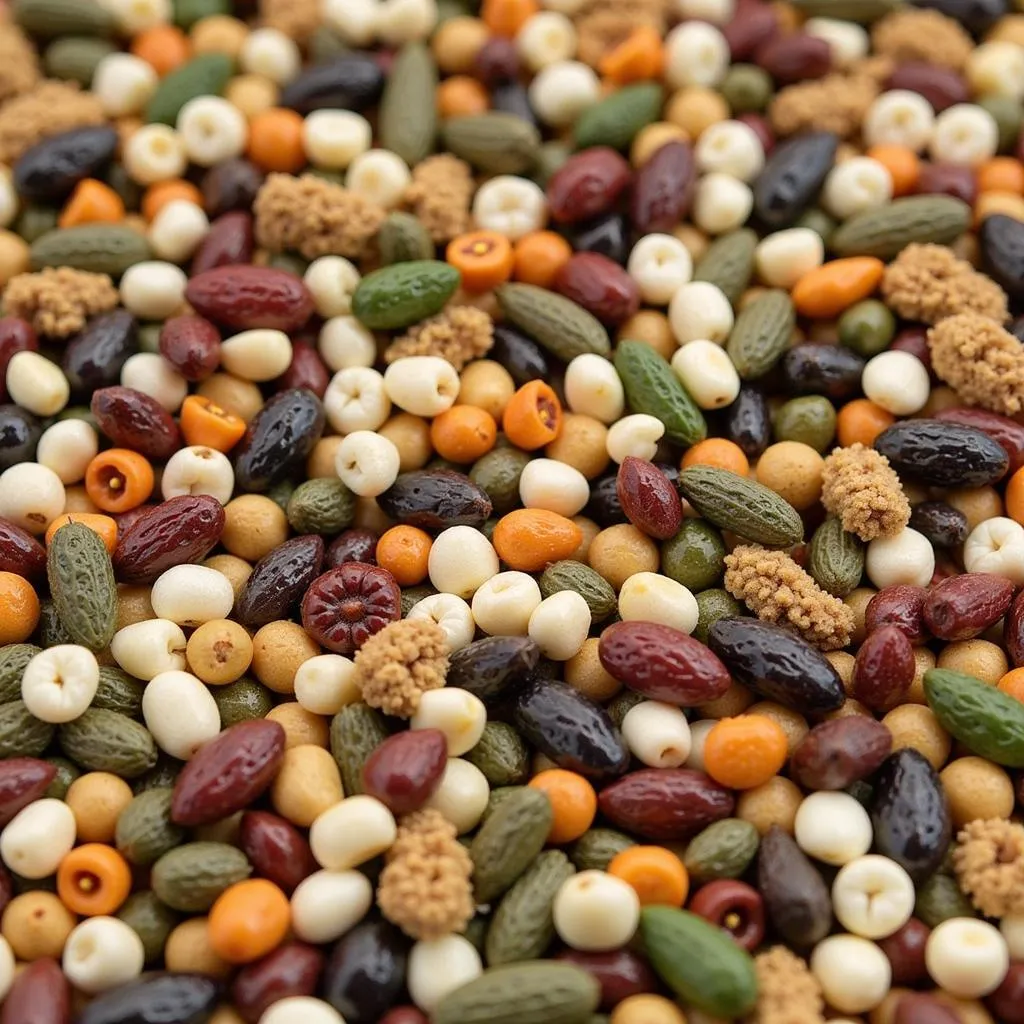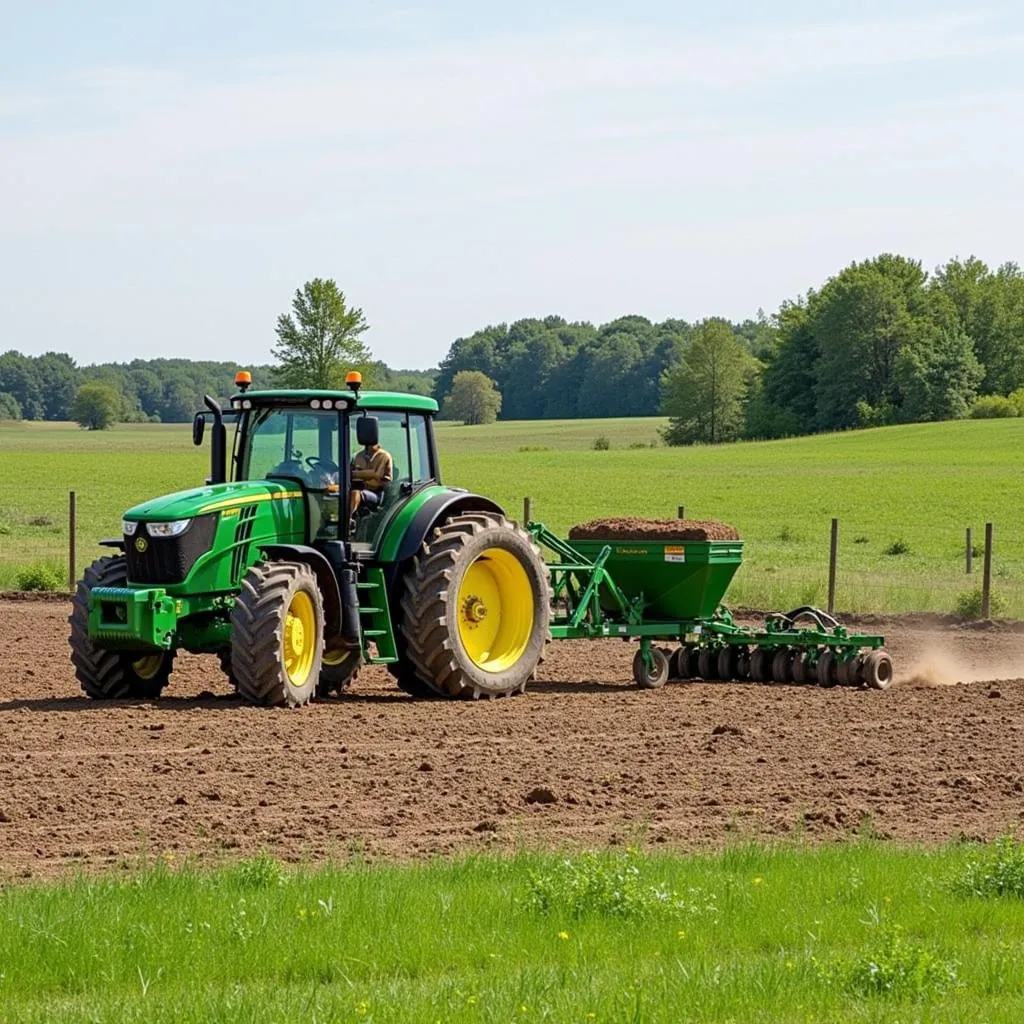Food Plot Mixes are a crucial element of wildlife management, providing essential nutrients and attracting animals to specific locations. Whether you’re an experienced hunter or a nature enthusiast looking to enhance your property’s biodiversity, choosing the right food plot mix can make all the difference. This comprehensive guide delves into the world of food plot mixes, equipping you with the knowledge to make informed decisions and create thriving habitats for your local wildlife.
 Deer Feeding on Food Plot
Deer Feeding on Food Plot
Understanding the Power of Food Plot Mixes
Food plot mixes are carefully crafted blends of seeds designed to provide supplemental forage for wildlife, particularly during times when natural food sources are scarce. These mixes typically include a variety of plants with different growth habits and nutritional profiles, ensuring a consistent food supply throughout the year.
Benefits of Using Food Plot Mixes:
- Attract Wildlife: Food plots act like magnets, drawing deer, turkey, and other animals to your property. This is especially beneficial for hunting and wildlife viewing opportunities.
- Improve Wildlife Health: By providing essential vitamins and minerals, food plots contribute to healthier and more robust wildlife populations.
- Promote Antler Growth: For hunters, food plots can lead to larger antler growth in deer by supplying the necessary nutrition during crucial developmental stages.
- Enhance Habitat Diversity: A well-maintained food plot adds to the overall diversity of your property, attracting a wider range of species and supporting a healthier ecosystem.
Choosing the Right Food Plot Mix: Factors to Consider
Selecting the appropriate food plot mix is crucial for its success. Several factors come into play, and understanding their significance will guide you toward the best option for your specific needs:
- Wildlife Species: Identify your target species. Different animals have different dietary preferences. Deer, for instance, are drawn to legumes and forbs, while turkeys favor grains and chufa.
- Soil Type: Conduct a soil test to determine its pH level and nutrient composition. This information is vital for choosing a mix that will thrive in your soil conditions.
- Sun Exposure: Assess the amount of sunlight the plot receives. Some mixes are shade-tolerant, while others require full sun to flourish.
- Planting Season: Consider the time of year you’re planting. There are specific mixes for spring and fall planting, each offering different benefits for wildlife.
- Budget: Food plot mixes vary in price. Determine your budget and explore options that align with your financial constraints.
 Types of Food Plot Seeds
Types of Food Plot Seeds
Popular Food Plot Mix Options
Now that you understand the key factors, let’s explore some popular food plot mix options:
1. Clover and Chicory Mixes:
- Ideal for: Deer, turkey
- Benefits: High in protein, attractive throughout the year, drought-tolerant
2. Brassica Blends:
- Ideal for: Deer
- Benefits: Cold-hardy, provide late-season forage, high in nutrients
3. Bean and Pea Mixtures:
- Ideal for: Deer, turkey
- Benefits: Warm-season growth, fix nitrogen in the soil, highly palatable
4. Grain Mixes:
- Ideal for: Deer, turkey, quail
- Benefits: Provide quick energy, attract a wide range of species
5. Summer food plot mix for deer:
- Ideal for: Deer
- Benefits: Provides essential nutrients during the warmer months.
 Planting a Food Plot
Planting a Food Plot
Planting and Maintaining Your Food Plot
Planting your food plot correctly is essential for its success:
- Prepare the Soil: Test the soil and amend it based on the recommendations. Clear any existing vegetation and till the soil to create a loose seedbed.
- Choose the Right Time: Follow the planting instructions on your chosen mix. Generally, spring and fall are the optimal planting seasons.
- Plant at the Correct Depth: Different seeds require different planting depths. Refer to the seed packet for guidance.
- Fertilize Appropriately: Use a fertilizer that suits your soil type and the specific needs of your food plot mix.
- Control Weeds: Regularly monitor and control weeds to prevent competition with your food plot plants.
Frequently Asked Questions about Food Plot Mixes
1. What is the best food plot mix for attracting deer?
While there’s no single “best” mix, clover and chicory blends, brassica blends, and bean and pea mixtures are highly attractive to deer.
2. When is the best time to plant a food plot?
Spring and fall are generally the ideal times for planting food plots. Spring plantings provide forage throughout the summer, while fall plantings offer food sources during the winter months.
3. How large should my food plot be?
The ideal size depends on your property size and the number of animals you want to attract. As a general rule, aim for a plot that’s at least 1/4 acre in size.
4. How often should I fertilize my food plot?
Fertilization requirements vary depending on your soil test results and the specific needs of your food plot mix. Consult with your local agricultural extension office for personalized recommendations.
5. Do I need to rotate my food plot mix?
Rotating your food plot mix every few years can help prevent soil depletion and reduce the risk of disease.
6. Can I plant a food plot in a shady area?
Yes, there are shade-tolerant food plot mixes available, often containing clover, chicory, and other plants that can thrive in lower light conditions.
7. 7 card stud food plot seed is suitable for which animals?
This specific seed mix is designed to attract and nourish a variety of wildlife, including deer, turkey, and other game animals.
Creating a Wildlife Haven with Food Plot Mixes
Food plot mixes are a powerful tool for anyone passionate about wildlife and land management. By understanding the different types of mixes, planting and maintenance techniques, and considering the factors discussed in this guide, you can create thriving food plots that attract and sustain healthy wildlife populations on your property. Remember to research local regulations and consult with wildlife experts for personalized advice tailored to your region and specific goals.